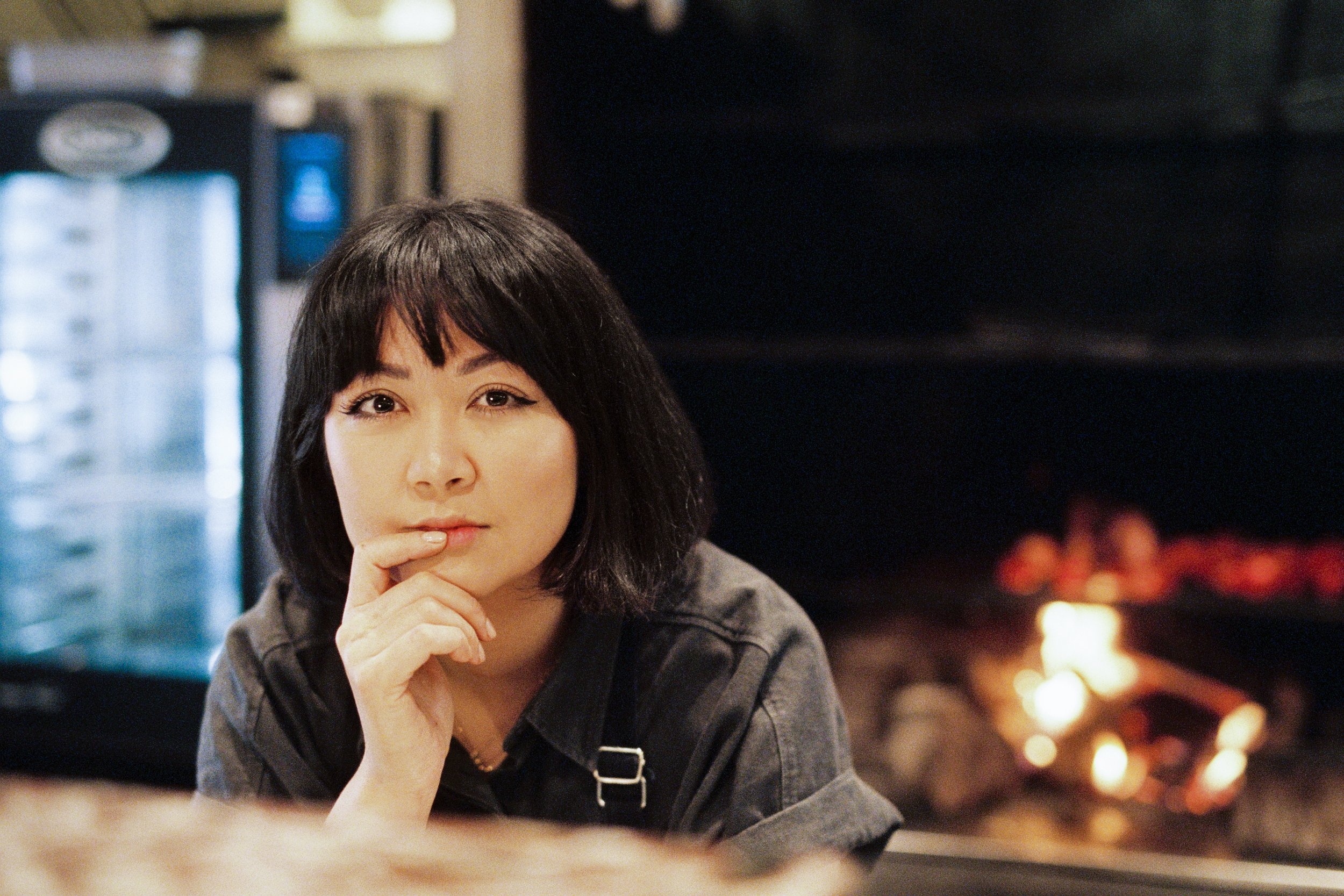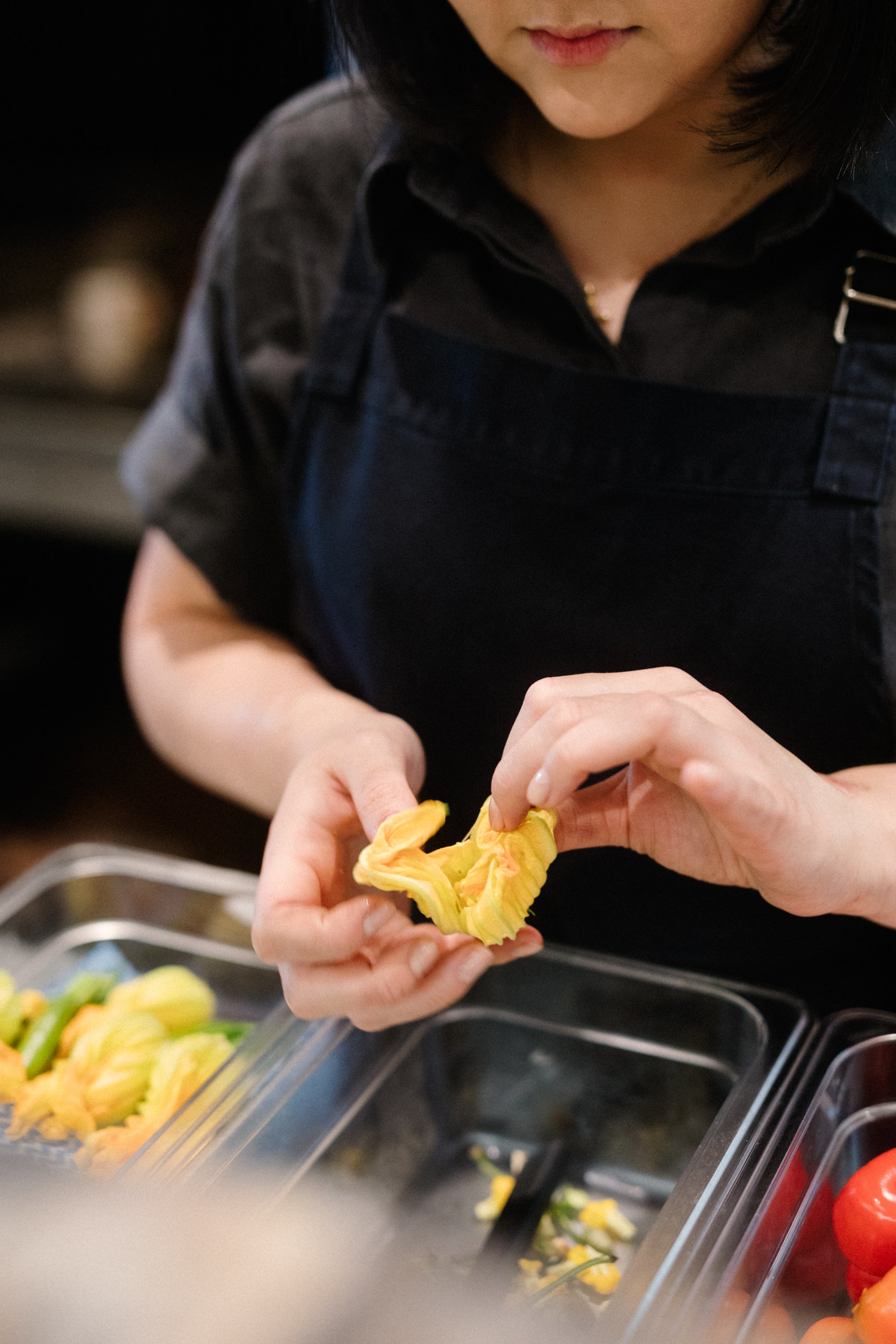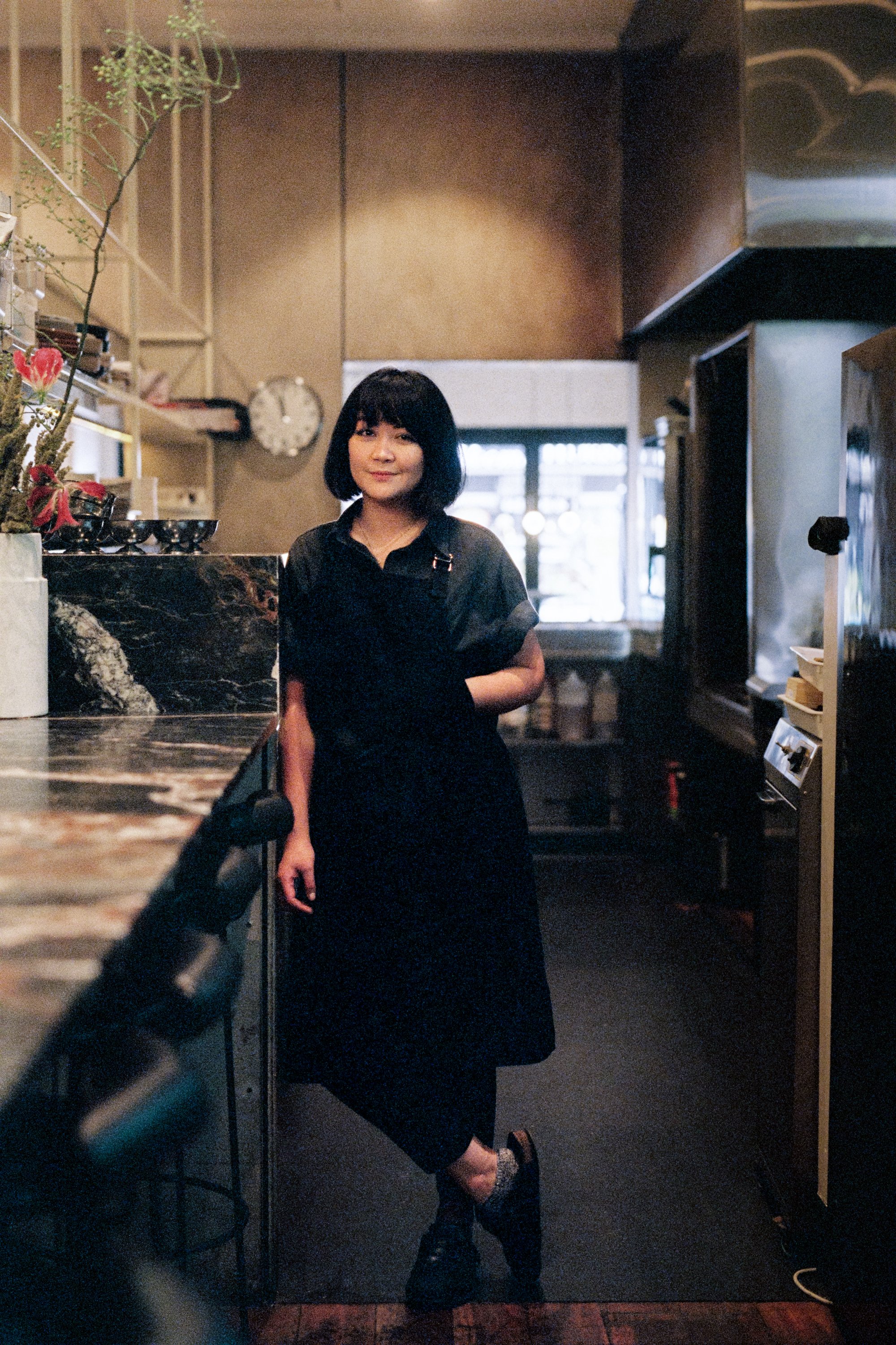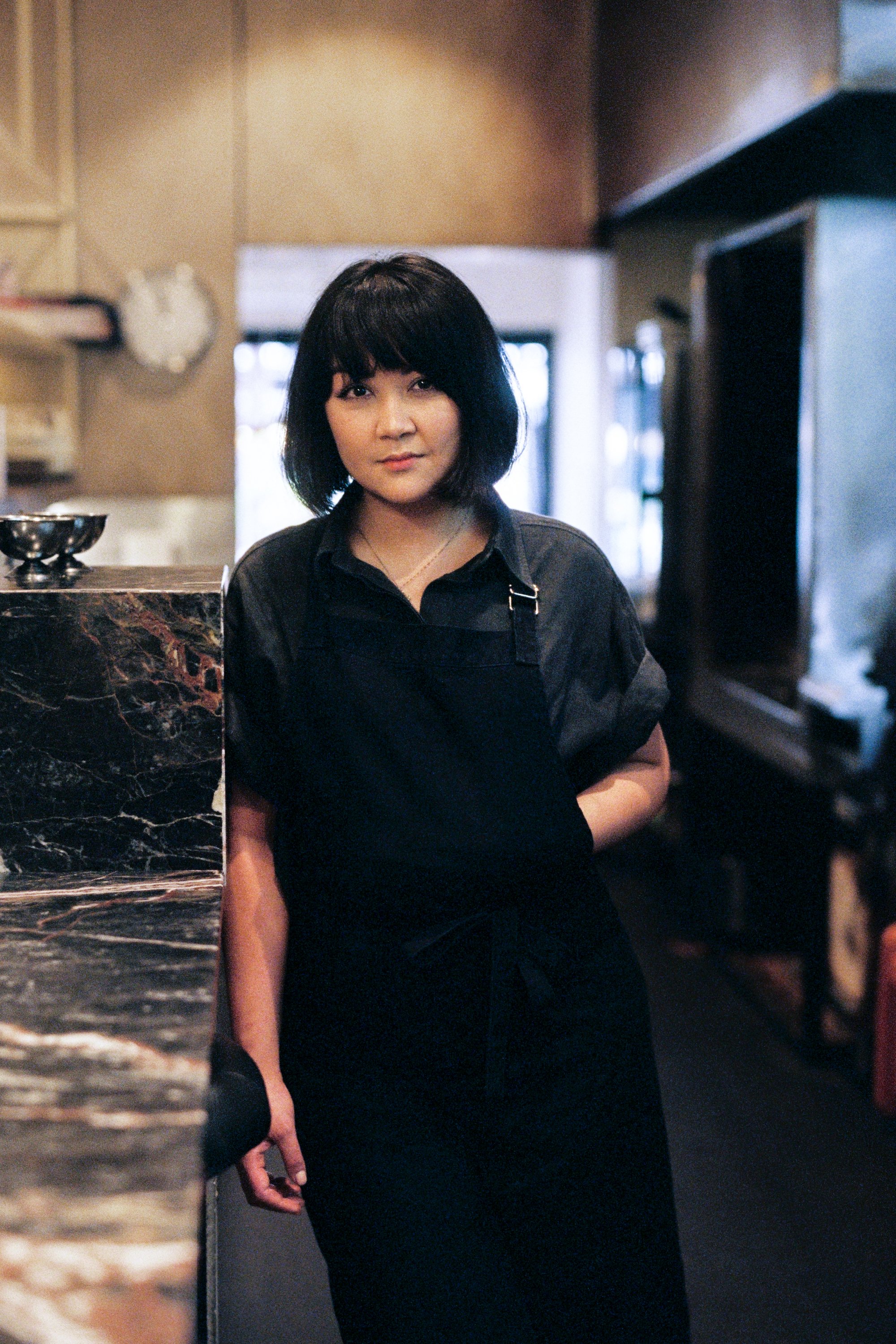Interview #199—Rosheen Kaul
by Nathania Gilson
Rosheen Kaul is the head chef of Etta Dining in Brunswick East, a food writer, and the co-creator of the Isol(Asian) Cookbook.
Rosheen spoke to Nathania about being thrown into the deep end, backing up your choices, and learning from everyone.
When did you first become interested in cooking? When did you realise you could start doing it professionally?
I actually attended university for several years before enrolling in culinary school. I was miserable at uni and had such difficulty choosing a career to pursue. I settled on psychology and neuroscience after dabbling in geosciences and environmental sciences, but my lack of enthusiasm was evident.
I made friends with a chef when I was in my early 20s. I was enthralled by his tales of the kitchen. I’d always loved eating, and food had always been a very important part of my life. But cooking had actually never crossed my mind.
This led to a throwaway conversation with my parents where they agreed I could ‘do anything I wanted’ as soon as I finished my degree. I got a job as a dishwasher a week later.
You’ve previously written about growing up as a third-culture kid in Australia for the New Voices on Food anthology, which was later published in The Guardian. What food rituals have you adopted since first moving to Australia? Growing up away from—or between—cultures, how has food shaped the way you see the world?
I’ve surprised myself a lot as an adult with how much I’ve held onto an Asian perspective in the way I see the world, and food in particular. I’ve spent the majority of my life in Australia, and yet feel like I haven’t eaten a proper meal unless it’s balanced, and features rice at its centre. Although my parents hail from different parts of Asia, their eating habits are very similar and have influenced me very heavily.
Your role at Etta in Brunswick East is your first as a head chef. How did you navigate the responsibility of running a kitchen (and shaping its culture) as well as being held accountable for a team?
The early days were incredibly difficult. It has gotten somewhat easier with time as the kitchen and team have settled down, but new challenges appear daily. Hannah Green—the owner, heart, and soul of Etta—has been my strongest support and ally, allowing me the space to make mistakes and learn from them.
In some ways, being thrown into the deep end and forced to swim focused my perspective on what was truly important with running a kitchen. I worked under so much self-induced pressure initially that Hannah would have to step in and force me to take time for myself. Slowly, I’m finding balance. It’s been such a journey.
How do you approach menu writing? Does the ‘perfect’ menu exist?
I don’t believe the perfect menu exists, but I do believe that good menus must be balanced, and concise enough that food is continually prepared fresh. Seasonality, of course, should feature, as long as you live somewhere that has seasons.
I learned early on that although you might want to put all sorts of dishes on the menu, you need to know your restaurant demographic and cook for them first. Etta already had a loyal following and strong support from the local community. It was incredibly important for me to learn about them and the way they used the restaurant so that I could write the menu in a way that continued what Etta was known for.
I used a familiar structure, inflecting it with my own style as I slowly figured out what it was.
It’s the same formula as most casual wine-focused restaurants across the world—snacks, raw dishes, medium and large plates, all wine-friendly, and meant for sharing.
Provenance, seasonality, and the open hearth wood fire that we cook over were all non-negotiable features, which honestly made writing my first restaurant menu easier.
During lockdown in 2020, you and illustrator Joanna Hu worked on three editions of a self-published cookbook called The Isol(Asian) Cookbook. Recipes included fried milk, golden coin eggs, billionaire fried rice, ‘unauthentic’ dim sum prawn toast, creamy tofu noodles, Sichuan sausage sanga, and lazy XO sauce. What life experiences inspired the book – and what did you learn from working on it as a DIY project?
Jo and I have lived very different Asian-Australian experiences. She quietly holds traditional Chinese values, speaks Mandarin fluently, and actually went to law school.
On the other hand, I’m very vocal about my multicultural Asian experience, with strong and colourful cultures that I am very proud to be a part of. I speak a smattering of lots of different languages and, even after 10-odd years of Chinese school, my Mandarin is absolutely pathetic.
There was so much rude freestyling of Asian dishes on my Instagram feed during lockdown—I couldn’t handle it anymore. I had to do something. For me, the first Isol(Asian) Cookbook was the only way I could scream and shout to the world about how they should be cooking and appreciating the simplest of Chinese cooking.
I wanted to implore people to look beyond pre-cut stir-fry veg mixes and dumping hoisin sauce on everything—to understand what makes Chinese cooking so perfect in its simplicity. Basic Chinese cookery is, I feel, the gateway to many other Asian cooking styles.
If we could capture an audience with a beautiful volume, and maybe teach them a thing or two, that would be enough. I trawled books and the internet and used a lot of Google Translate, finding dishes that were simple, with interesting stories or names. Fried milk, golden coin eggs, and billionaire fried rice are all real dishes.
The snack sections in there were just me being cheeky, though.
What are some things you’d like to see change structurally in the hospitality industry?
Honestly, the hospitality industry cannot make any important changes until consumer perception changes. Customers need to understand that they’re not just paying for the ingredients in their dinner. You’re also paying so that the chefs, kitchen hands, front of house, and bartenders can make a decent living wage.
Whinging and crying that you can make the same dish at home for $6 and that paying $28 is expensive is so misguided, and prevents any sort of progress in hospitality. If the industry could offer better wages, we could hire more staff, and people wouldn’t have to work 60+ hour weeks at minimum wage.
The margin that the industry works with is razor-thin, and I don’t see any hope of it getting better without people understanding what it takes to put food on your plate and wine in your glass. I love what I do in hospitality, but it’s heartbreaking when I hear people complain about prices—like our time and effort aren’t worth paying for.
Something your food writing explores is the idea of confidence: people want to be able to cook Asian food in their own kitchens, they just don’t have the right level of knowledge to have that be an everyday reality.
At the same time, you also celebrate shortcuts and a ‘no-shame’ approach to the food that is most comforting at the end of a tough day—whether that’s instant noodles or microwaved rice.
It reminds me a lot of Samin Nosrat’s idea of cooking without recipes, and Ruby Tandoh’s advice for eating what you want. What food writers inspired you, or helped you navigate (or not be intimidated by) the technicalities of cooking—and find your voice as a writer?
I’ve always been so enamoured by Fuchsia Dunlop’s body of work. As an Anglo-Saxon woman who has delved so deeply into the history and craft of Sichuan cookery, she has made it such that she can speak expertly on the subject, conducting herself in a way that doesn’t overtake Chinese voices. She makes it accessible to plenty of non-Chinese speakers, like myself. Instead, she has put in the work to educate others, and share the exquisite beauty that she sees in regional Chinese cooking.
From her, I’ve learned that if you do the work—really, do the work and educate yourself—you needn’t be afraid of writing and sharing [about food from a culture different from the one you come from].
Another food writer whose work I really enjoy is Mandy Lee. Her perspective is similar to mine, where her understanding of Asian cooking comes from our heritage. She cooks with fierce confidence, freestyling the food of her own culture because she can. She draws from all of her different influences to create some seriously exciting and tasty food.
I think you can do whatever you like. You just need to be able to back it up with effort, knowledge, and understanding of the dish, ingredient, or cuisine. If you’re just making ‘Asian duck’, that’s absolutely not good enough.
Something I’ve been thinking about lately is the difference between what’s considered to be historically authentic versus authentic based on our lived experience. As a chef, how have you found ways to make something ‘yours’?
I’ve been exploring this topic quite a bit with my writing recently. Being as multicultural as I am, one could argue that nothing I do will ever be authentic because I don’t have that lived experience of one culture. I tend not to use that term at all because I genuinely don’t know how to apply it to myself.
All I know, and all I can cook from, is my own experience of being Kashmiri, Singaporean, Chinese, Filipino, and Indonesian, all within the framework of being Australian. At least I’ll never run out of delicious content.
You’ve worked briefly at Smith and Deli, Shannon Martinez’s vegan deli—how did it open your eyes to dietary requirements and maintaining deliciousness?
Working at Smith and Deli was life-changing. In most kitchens, dietary requirements are nothing more than a hassle, sneered at by a lot of chefs. In Shannon’s restaurants, it’s just a reason to think outside the box and a real challenge of your culinary knowledge.
You think you’re a good chef? Okay, make it vegan and gluten-free and make it delicious. There is a serious skill in those kitchens—particularly from the pastry chef, El—and none of the ego that you’d find in others.
They produce amazing food without access to an entire food group. It’s astounding and eye-opening because I learned that if you put as much effort into catering for dietaries as you do writing your main menu, you will have a group of very appreciative people.
Can you describe a life-changing meal you’ve had?
I was lucky to have dinner at a restaurant called The Chairman in Hong Kong. I actually had food poisoning at the time, but couldn’t miss the reservation because it was impossible to get in the first place.
Anyway, the food was just … magnificent. Not particularly fancy, a kind of new-style Cantonese fare. Without an understanding of classic Cantonese cooking, a lot of the detail and beauty in these dishes would have been missed. The seafood dishes were purposely under-seasoned to emphasise the essential flavour, which is a highly prized feature.
Their signature dish is steamed flower crab with yellow wine and chicken fat. There is very little seasoning, and the fragrance of the wine and mouth-coating feature of the chicken fat brings out such a deep sweetness from the crab. It’s absolutely sensational, although the uninitiated would probably ask for soy sauce.
You're working on your first cookbook for an Australian publisher. What has the process of putting it together been like?
I am! I’m in the editing stages of Chinese-ish, a beautiful cookbook that I’ve written with my friend Joanna Hu, which will be published by Murdoch Books in the later half of 2022.
It’s the Isol(Asian) Cookbook on roids, really. A collection of recipes through which we tell the story of our Asian Australian experience: from our arrival in Australia to the teenage rebellion against our parents, and then coming full circle and accepting and loving our culture. Fully illustrated by Jo, of course.
To be honest, though, I signed the book deal when I was still unemployed. Being a first-time head chef, running my own kitchen, and somehow busting out a 200-page cookbook has been one of the greatest challenges yet.
Do you have a dream project or collaboration that’s either in the works, or planned for the future?
Honestly, I wouldn’t even have dared to dream about what I’m already doing—being the head chef of an incredible restaurant, publishing a cookbook, and cooking often for important people in the industry. I’m still trying to play catch-up with the last 12 months.
What’s an ingredient you recommend everyone should learn to cook with?
Chilli! There are so many different kinds, which provide so many different flavours, and so many different applications beyond just heat and spice.
What tabs do you have open on your computer at the moment?
Oh, gosh. So many. I’ve got a really great Uyghur food blog open, three clafoutis recipes, Goodfish (which is a great sustainable seafood resource), a sea urchin spaghetti recipe, and the Etta booking system page, of course.
Do you have any advice for emerging chefs and food writers?
Only the advice I’m following myself: that your work resonates more if it's genuine. I’m cooking and writing what I know, drawing from my own experience. My own truth, if you will.
Eat everything, read everything, learn from everyone.
How do you practice self-care?
I take my time in the mornings getting ready, watching my coffee drip, and doing a very slow and thorough skincare routine. No matter how tired or run-down I am, I don’t skip my routine.
I feel that presenting well sets me up for success every day. You could call it vain, but it’s very important to me to look my best.
Even if I spend the rest of the day running around or scrubbing grease and soot off the exhaust system, I’ve had my moment of calm in the morning.
What does being Asian-Australian mean to you?
A lovely, all-encompassing term for everything that I am that doesn’t diminish any of my ethnicities or experiences. I am Asian, but I am undeniably Australian, too. Someone like me can only exist in the western world.
Interview by Nathania Gilson.
Photography by Hashem McAdam, at Etta.






